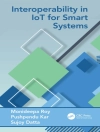This book introduces the concept of using drones as a teaching tool to explore the fundamental principles, technology and applications of Cyber-Physical Systems (CPS).
A short introduction sets CPS in the context of the 4th industrial revolution, and describes various CPS technologies including self-driving cars, commercial intelligent drones and mobile robots, in which artificial intelligence routinely supports smarter decision-making. The core of the book then focuses on commercially available drones, the only available system offering the advantage of cyber-physical bridging through 3D autonomous dynamic flying in classroom conditions. Chapters describe drone technology, including location sensors and imaging systems. CPS theory is explained through typical drone flying procedures and do-it-yourself (DIY) aerial photography in which communication between sensors, actuators and controllers occurs through cyber-physical bi-directional bridging.
This book opens new possibilities in fostering 4th industrial revolution literacy, introducing relevant examples from readily available equipment, making core elements of cyber-physical bridging accessible. It is aimed primarily at those students who have an interest in CPS, drones and those from disciplines that are concerned with spatial information.
Tabla de materias
Chapter 1. Introduction to the 4th industrial revolution.- Chapter 2. Drone flight ready.- Chapter 3. Cyber systems.- Chapter 4. Physical systems.- Chapter 5. Location sensors.- Chapter 6. Imaging sensors.- Chapter 7. Valuing cyber-physical bridging intensity of drone.- Chapter 8. Futurology and future prospect of drone CPS.
Sobre el autor
Jung-Sup Um received his Ph D from the University of Aberdeen in 1997. He is currently a Professor of Geography at Kyungpook National University. His field of interest is applications of Cyber-Physical systems, focused on smart drones in relation to Remote Sensing and GIS. Prof. Um is Editor in Chief of journal, Spatial Information Research since 2015.












